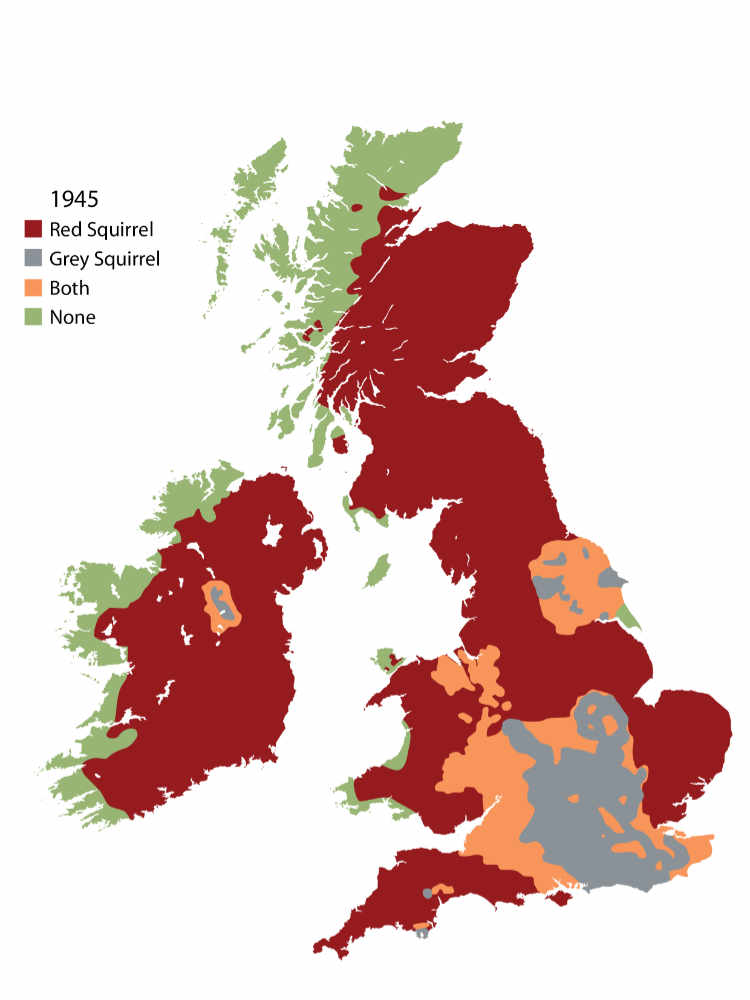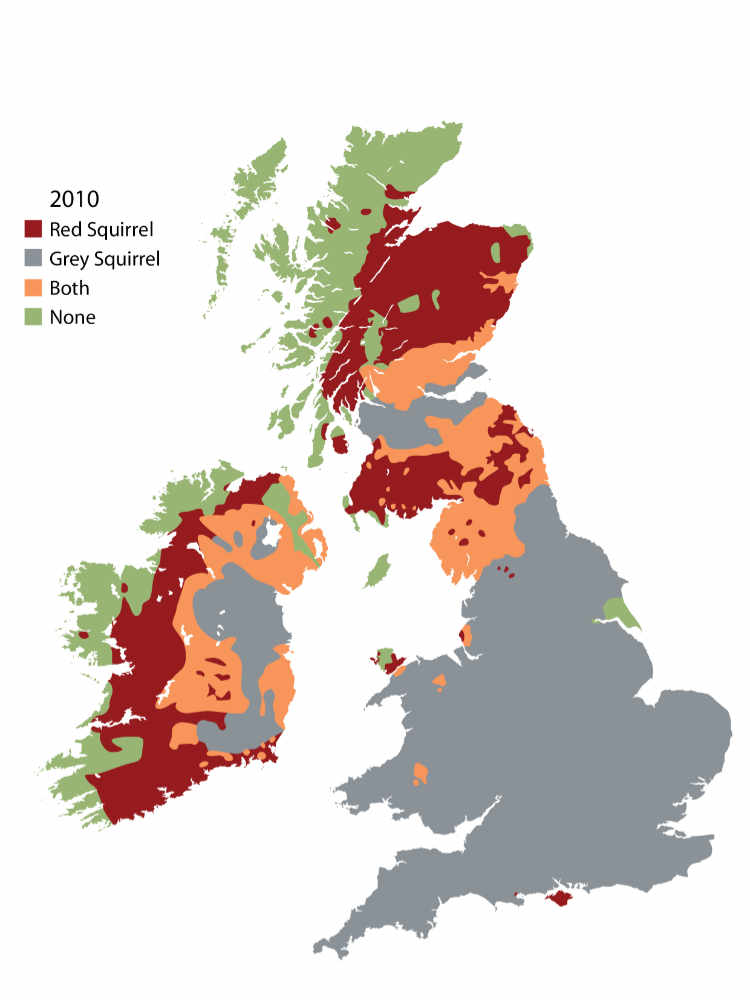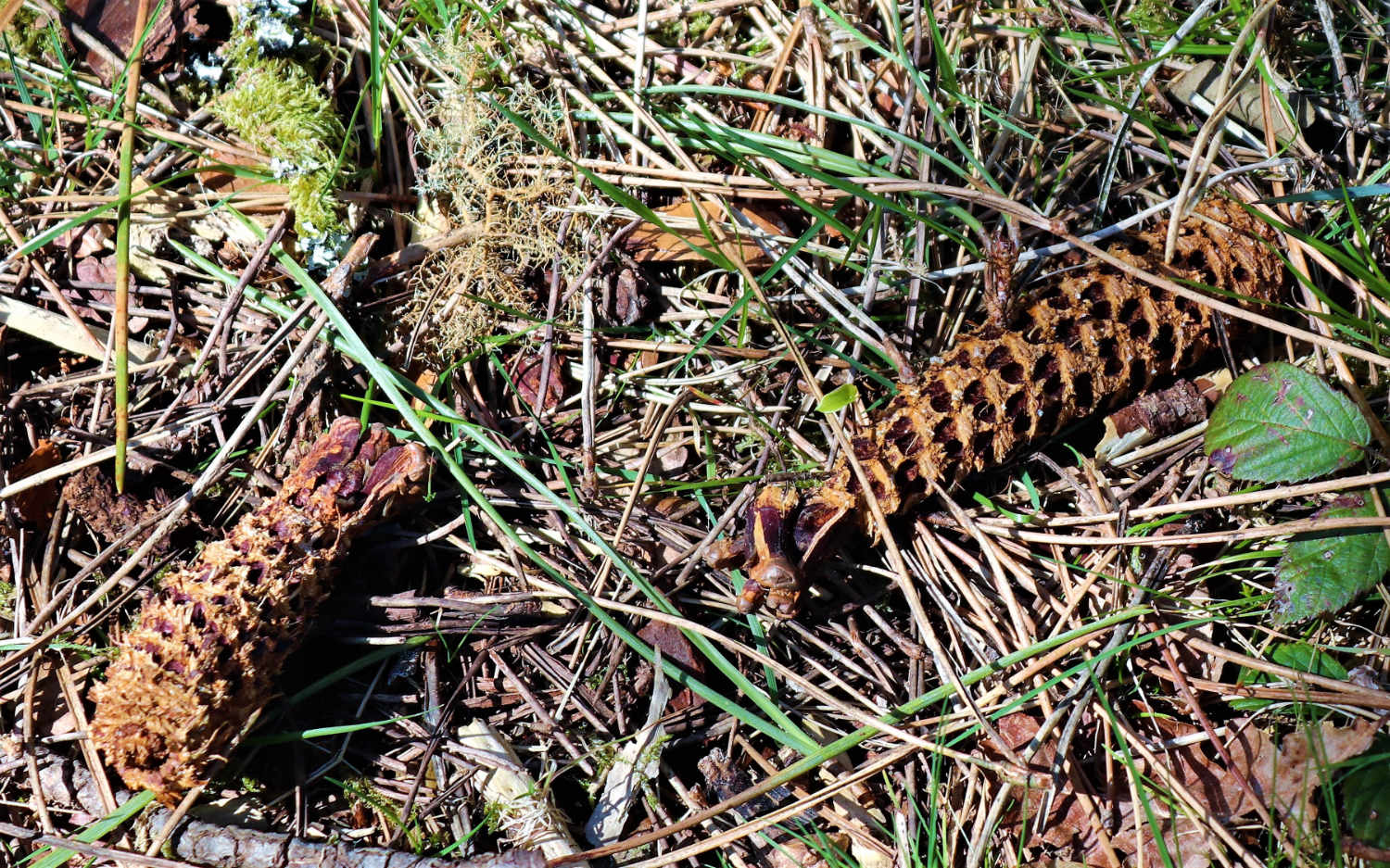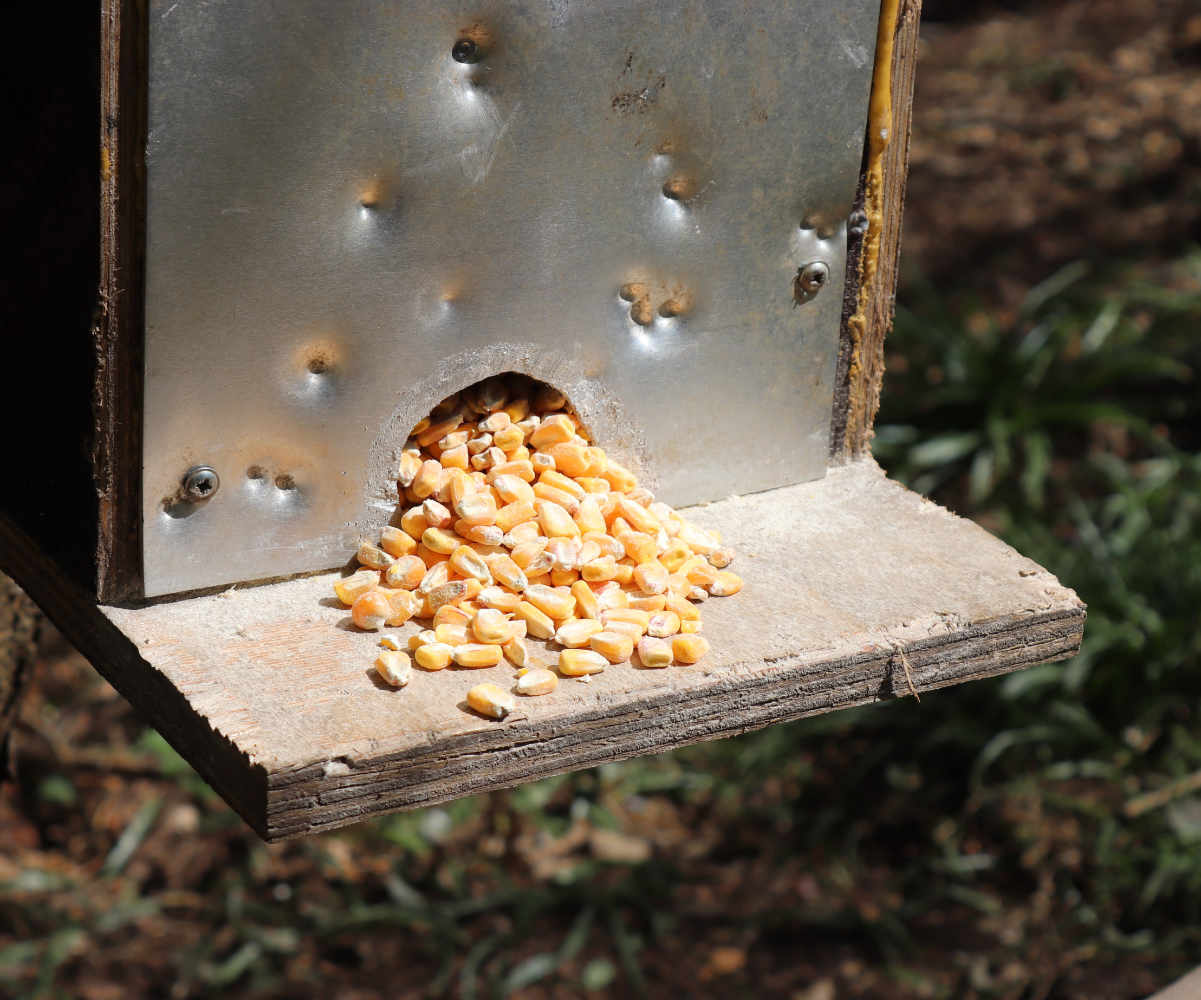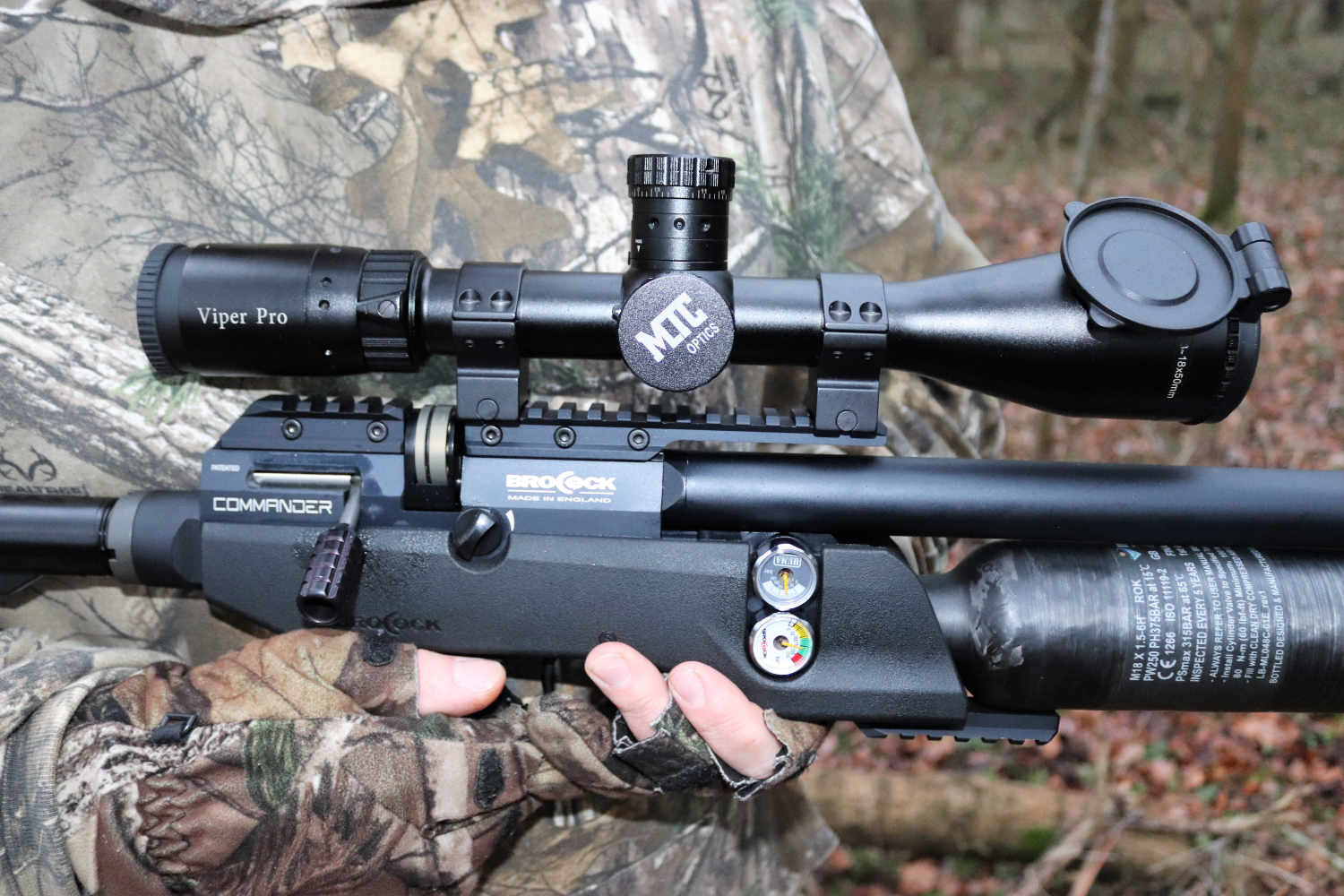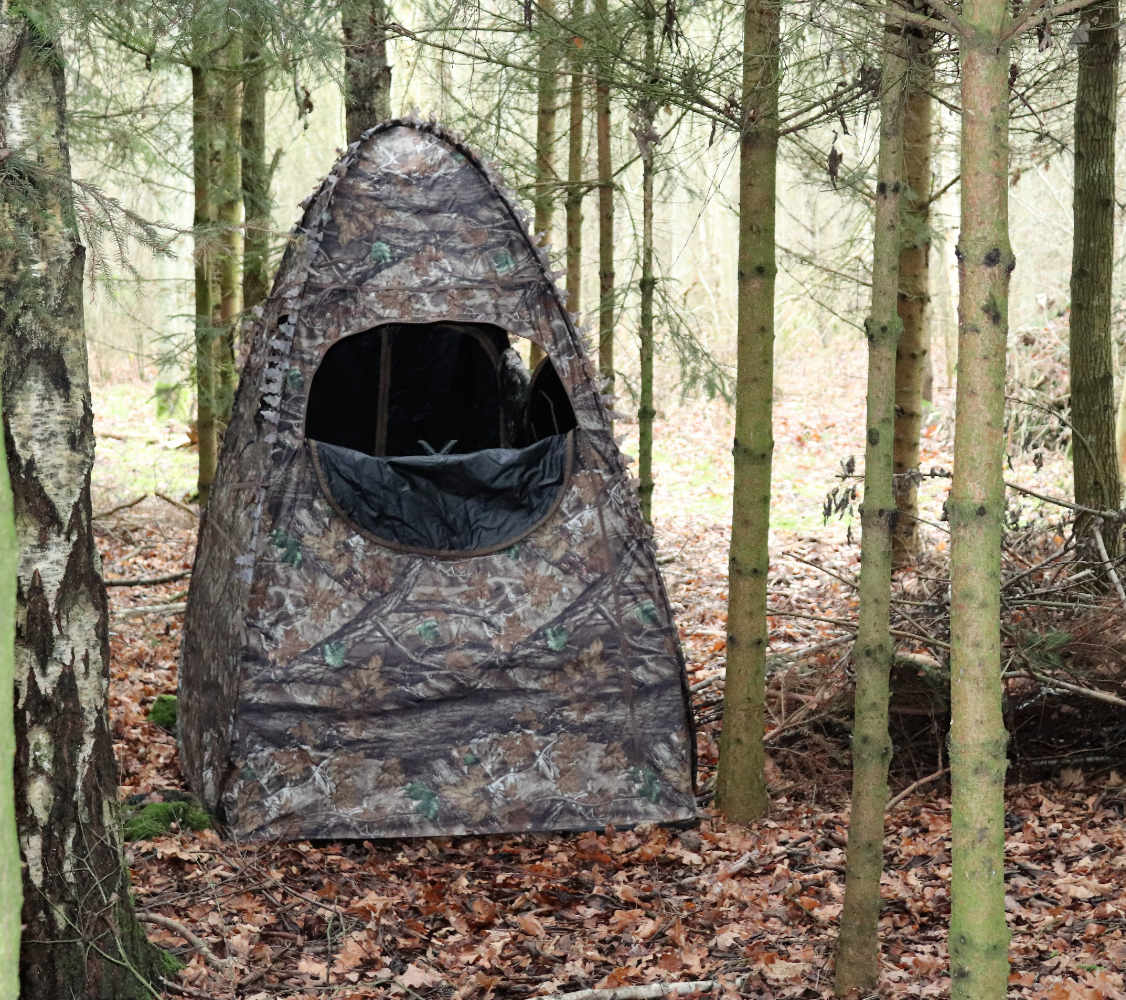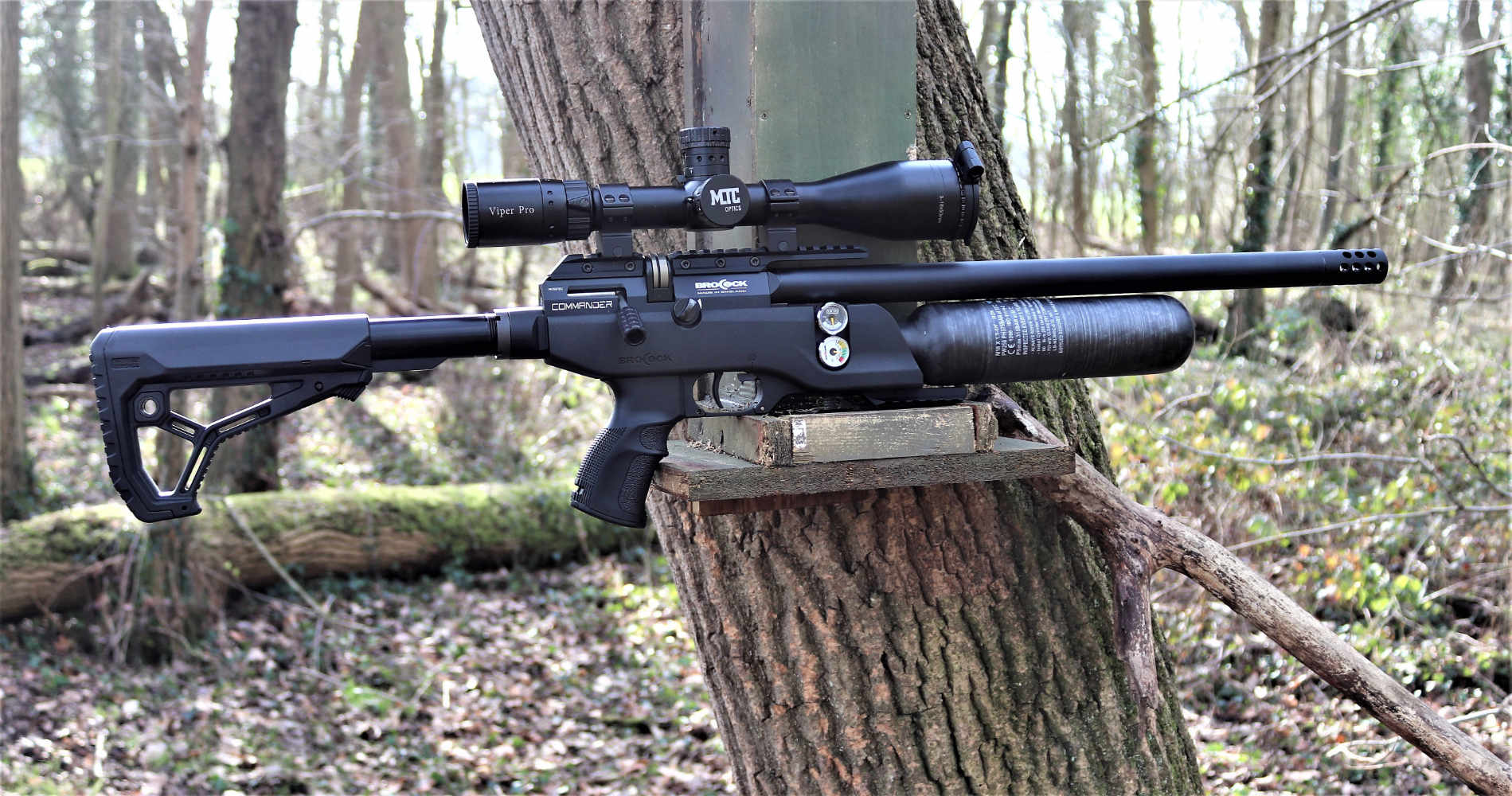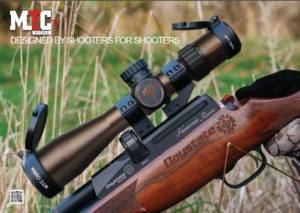BROCOCK AND MTC OPTICS HUNTING CONSULTANT RICHARD SAUNDERS HIDES HIMSELF AWAY TO CONTROL A RAMPANT WOODLAND SQUIRREL POPULATION
Of all the general license quarry species, the grey squirrel has to be the most mis-understood. Most shooting neutrals understand why we shoot rats, and many will concede that rabbits and pigeons make a tasty dish.
But squirrels? Now why would you want to shoot those cute, fluffy little chaps? You can’t eat them. Well, you can for starters, literally, or as a main course, though I’ll admit their appeal is a little more niche.
Few people realise just how destructive grey squirrels are. Leaving aside the fact that their introduction to Great Britain, not their fault, has decimated our native red squirrel population, their impact goes much deeper.
Most of us know the damage they cause by stripping bark, killing limbs and even entire trees. And much has been written, certainly in the shooting press, about the way they predate on song bird eggs and chicks.
However, many don’t realise that grey squirrels are highly tolerant of tannins and as a result are able to eat food before it is ripe, thereby denying it to other woodland creatures. For example, the nationwide decline in dormice, which feed almost exclusively on mature hazelnuts, is believed to be linked to the increase in grey squirrels.
CONTROLLING PESTS ONLY WHEN THEY ARE BEING A PEST
So where am I going with this? Well, I do a lot of pest controlling, and I also find myself explaining to those who don’t shoot why. My friends, family and I eat much of what I shoot and any we can’t consume go to the local birds of prey centre.
However, my maxim has always been to only shoot pests when they are being a pest. For example, one of my permissions is teeming with rabbits but no horses are kept on the land, nor any livestock, and no crops are grown. I focus on the abundant rat population because they pose a health risk for the farm workers but leave the rabbits alone because they’re not harming anyone or anything.
It’s the same with squirrels; they only get my full attention on permissions where they are being a nuisance.
Take for example a 25-hectare wood in south Oxfordshire I shoot on. Planted only 30 or so years ago, the trees are still immature. They are grown for their timber value and comprise mainly hardwood species – oak, cherry, walnut, beech and ash. Consequently, the owner wants them to grow with nice straight, unscarred limbs. Unfortunately, the huge population of grey squirrels disagree. By stripping bark, they cause thousands of pounds of damage each year.
Squirrel Population 1945
Squirrel Population 2010
Red squirrels have been declining steadily as grey squirrels have thrived
A sure sign that squirrels aren’t far away
A PLANNED AND COORDINATED APPROACH TO GREY SQUIRREL CONTROL
With such a vast area, controlling the rodents is an ongoing battle and I’m part of a small team of rangers fighting the good fight. Traps would help for sure, but they need to be checked every 24 hours by law and we can’t commit to doing that. And poisoning is not only illegal, it’s just wrong.
So airguns, used mainly in tandem with peanut feeders, are the answer. Contrary to popular belief, whilst peanuts are like catnip to squirrels, you can’t plonk a feeder anywhere and expect the squirrels to flock to it. They won’t venture into the open if there’s the chance a bird of prey will pick them off for example.
My fellow rangers and I plot the location our feeders on a map so we don’t get in each other’s way. I typically rotate around a network of three feeders and will move them when the number of squirrels I shoot falls off. Whenever I target a new area I put up a small feeder with a trail camera so I can get a sense of how many squirrels are being attracted to it. If it looks like being productive, I put up a larger feeder.
ALL YOU CAN EAT PEANUT AND MAIZE BUFFET
Now, at the start of spring, the emergence of natural food means squirrels will be less attracted to the feeders. However, by keeping them full throughout the year, the squirrels on my permission have to come to regard the peanuts as a staple part of their daily feeding habit.
My trip this week focused on a new location in which I’d placed a bait box a few weeks ago. By having to top the peanuts up every other day, and reviewing the trail camera footage, I was expecting a busy morning.
Arriving early, I was in position before sun up. I’d erected my pop up hide when I put the feeder up so only had to walk in with a chair, shooting sticks, ruck sack and, of course, my rifle – a 12 ft.lbs. Brocock Commander in .177, paired with an MTC Viper Pro 3-18×50 scope. Nice and compact, its perfect for using in a hide.
Peanuts will draw squirrels in but maize works just as well and is a lot cheaper too
Not only is the Brocock Commander ideal in a hide, it’s a real tack driver when paired with an MTC Viper Pro
SET UP AND IN POSITION
The feeder is located just off one of the tracks through the woods, so I was able to make my way in without causing too much disturbance, and within a few minutes, I was sat in my hide behind the Commander on the sticks with a cup of tea steaming away beside me.
I love this part of a squirrel session. No matter how many times I do it, I always get a thrill from the sense of anticipation and expectation as I wait for the sun to come up and dilute the woodland gloom.
Every few minutes I put the rifle to my shoulder and focused through the Viper Pro to check the light and to make sure I had the parallax and magnification set just right. As soon as it was light enough, I risked a shot at a spinner screwed into the side of the feeder to make sure the Commander was on zero.
It was and at just 20 metres, the pellet made an ear-shattering crack, but it had to be done. I cranked the bolt and cycled another pellet, making a mental note that I now had nine more shots in the magazine.
Sitting back, it didn’t take long for the blue tits, nuthatches and other small birds to start flitting to and from the feeder for their breakfast. They scattered when a woodpecker arrived to join the all-you-can-eat peanut buffet, and then he too disappeared when a couple of jays announced their arrival with raucous calls.
The landowner has specified that jays are not to be shot as they don’t pose a threat to the lumber, so I watched the pair through the crystal-clear Viper Pro glass as they guzzled down a few peanuts and then flew off again.
I always open the side windows to the hide so I can see squirrels approaching across the woodland floor, but make sure to wear a face veil and gloves to guard against any flashes of skin. Eventually some movement on my left caught my eye and for once the cause was not one of the many pheasants that inhabit the woods.
THE ACTION BEGINS
A squirrel was making its way towards the feeder tree, bounding across the floor and stopping every few yards to sit up and look around for signs of any danger; foxes patrol the woods and would be only too pleased at the chance of an easy meal.
Within a few minutes, the rodent reached the tree and scampered up a branch I have placed against the tree as a ramp. It paused on top of the feeder box and looked straight at me before diving down to the feed tray and selecting a peanut.
It was presented side-on to me and I waited a second or two for it to get comfortable. The squirrel looked enormous through the Viper Pro on 12x magnification. The Commander is zeroed at 20 metres, the distance to most of my feeders, and I settled the scope crosshairs behind the squirrel’s eye.
The Commander popped gently and the .177 pellet landed with a hollow thwack. The squirrel fell off the feed tray, lingering for a second or two as it gripped on with its back foot, before falling to the ground. Squirrels are tough little critters and I watched it through the scope for 30 seconds for any sign of life. There was none though, and I could see the pellet had struck exactly where I had aimed.
Resisting the temptation to go and pick the squirrel up, I left it where it lay, knowing it was dead. I’ve had half a dozen or more laying on the floor before now and it never seems to put others off for long; though they will sometimes be more cautious at the sight of dead squirrels, tail flicking in agitation, they usually succumb to the temptation of a free meal in the end.
A pop up hide provides concealment and a few creature comforts. This one could do with some additional dressing to break up the outline further.
A squirrel eye view back at the hide
THEY KEEP COMING
As is often the way, the squirrel population was clearly on a timetable, and now was feeding time. A steady procession came to the feeder, from the left and right, as well as a few that seemed to materialise out of thin air.
The Commander and Viper Pro combination worked flawlessly and by lunchtime I’d shot another seven. Having taken a sighting shot, that meant I had just one more pellet in the magazine and I decided to call it a day with one more squirrel.
In the end though, the squirrels had the last say. I waited another hour but no more turned up. After discharging the final pellet into the ground, I collected the eight I had shot and re-filled the peanut feeder, knowing I’d need several more trips before I could consider the area temporarily cleared of the grey pests.
The Brocock Commander gives 520 accurate and consistent shots in .22 and a little less in .177 thanks to its regulated, 10-shot bolt-action. With its geared turret and customisable ribbon, the MTC Viper Pro helps you determine appropriate Mills and MOA adjustments

